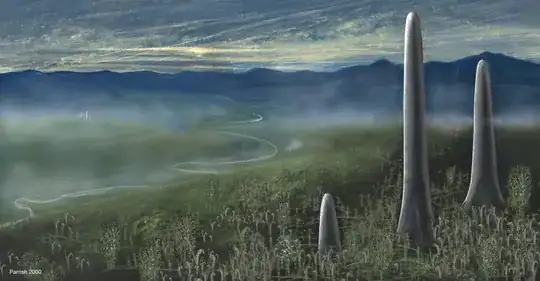Fossil mushrooms are rarities. Mushrooms are the fungal equivalent of flowers - spongy, ephemeral, disposable bodies generated to serve a reproductive need. You could not use mushrooms for wood.
The prototaxites were not mushrooms. They were large and substantial. I deduce this from the presence of growth rings in the fossil prototaxites.

https://www.researchgate.net/figure/Transversely-sectioned-Prototaxites-fossil-This-overview-image-originating-from-a_fig1_51174561
The presence of rings means this structure endured shifts in growing conditions over time. This thing was there for many seasons. On earth, that means it weathered storms and wind: no small feat for an upright thing this size.
There is an analogous modern fungus: the bracket fungus aka "shelf fungus".

The shelf is also a spore-making body but a permanent one, and it also can persist many seasons, laying down growth rings with the seasons. Bracket fungi are as tough as wood.
https://herbarium.usu.edu/fun-with-fungi/shelf-fungi
Woody shelves may be several years old. They add a new layer of spore
tissue every growing season. The old layer is covered by the new one.
These layers look like growth rings in a tree. One author reported
counting 37 rings. Ten layers may mean the shelf is 10 years-old if
there is only one growing season (spring). If there are two growing
seasons per year (spring and fall), it may only be 5 years-old.
One of the largest shelves weighs 300 pounds…
Woody shelves are impossible to break with your hands and difficult to
cut. This toughness results from the kinds of hyphae (filaments) that
are used to construct the shelf. Easily crushed mushrooms are made of
thin-walled hyphae. Some of the hyphae in woody shelves are
thick-walled and the hyphae are interwoven making them tougher. They
resist tearing or splitting because there are no planes to split along
in the tissue.
A bracket fungus large enough could be used for wood. The medium to small ones are used to make real shelves and durable beads.
It is reasonable to assume the prototaxites were of a composition similar to modern bracket fungi and so suitable for use as a wood equivalent.
 Painting by Mary Parrish, National Museum of Natural History.
Painting by Mary Parrish, National Museum of Natural History.
